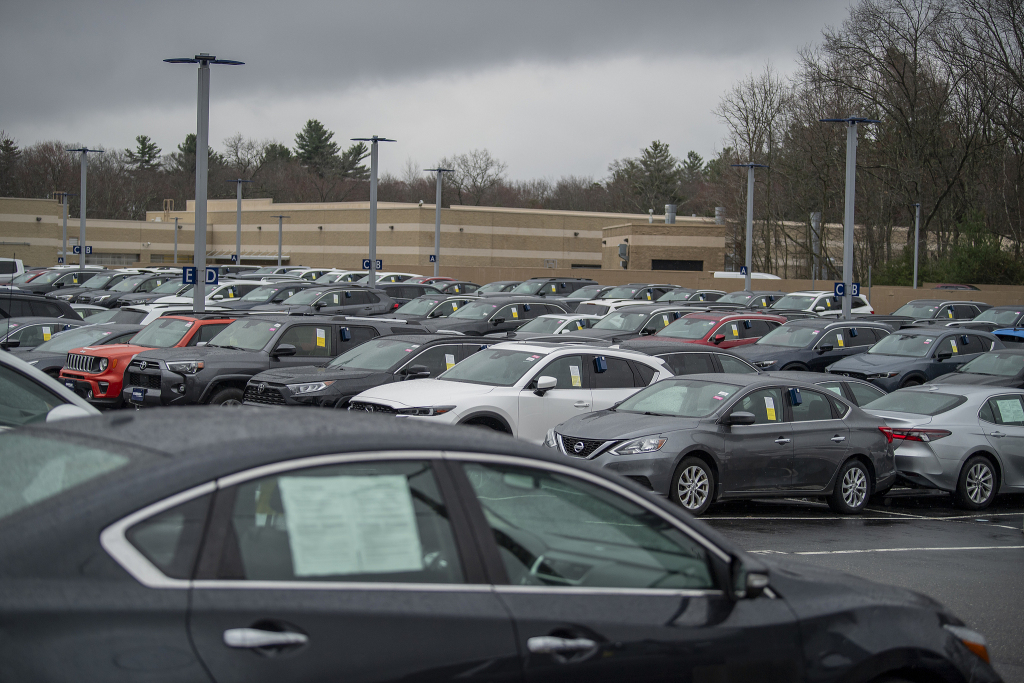
Recently, the monthly penetration rate of new energy vehicles in China has exceeded that of traditional fuel vehicles for the first time, surpassing 51%, shifting from a supporting role to a leading one.
Simultaneously, according to data released by the market research firm Rho Motion, global sales of new energy vehicles increased by 21% year-on-year in July, reaching 1.35 million units. Among them, 880,000 units were contributed by China.
It can be said that now the world's automotive industry is looking at new energy vehicles, and new energy vehicles are looking at China.

On July 19, 2024, at the Lianyungang Port in Jiangsu, China, roll-on/roll-off vessels are preparing to load new energy vehicles for export.
Thanks to the inherent advantages of electrical architecture, the intelligence that Chinese consumers are passionate about is easier to achieve in new energy vehicles, making it one of the reasons people prefer electric cars.
However, the most important reason is that electric cars are indeed becoming more affordable.
A new study by the U.S. Department of Energy's Vehicle Technologies Office shows that from 2008 to 2023, the cost of electric vehicle batteries has decreased by as much as 90%, making it easier for automakers to achieve the vision of "price parity" between electric and traditional vehicles.
The major cost of electric vehicles lies in the battery. The size and weight of the battery pack affect the final price of the vehicle. As a result of improvements in battery technology and chemical formulations, new manufacturing processes, and a significant increase in production volume, the cost of power batteries has been steadily decreasing over the past few decades.
According to data, the cost of lithium-ion batteries has dropped from $1,415 per kilowatt-hour in 2008 to $139 per kilowatt-hour in 2023. Taking the Tesla Model Y as an example, its 81 kWh battery would have cost $114,615 in 2008, whereas in 2023, it would cost $11,259.
Some automakers predict that battery costs will continue to decline in the coming years, making electric vehicles truly affordable products.
A study by market analysis firm Gartner indicates that by 2027, the production cost of electric vehicles will be lower than traditional fuel vehicles.
Lower production and operating costs will save electric vehicle customers a significant amount of money. According to the research, owning an electric vehicle for more than five years will result in lower overall costs compared to traditional fuel vehicles.
However, although the global sales of electric vehicles are continuing to rise overall and costs are gradually decreasing, trade disputes between countries may negatively impact the growth of electric vehicles in the short term, causing the rate of cost reduction for electric vehicles to slow down or even rebound.
Earlier, the European Union decided to impose a temporary anti-subsidy tax on electric vehicles imported from China starting on July 5 for a maximum period of four months. During this period, EU member states will vote to decide on the final anti-subsidy measures. If passed, the EU will officially impose a five-year anti-subsidy tax on Chinese electric vehicles.
According to the announcement, BYD, Geely Auto, and SAIC Group, three Chinese automakers sampled for the investigation, will be subject to a temporary anti-subsidy tax of 17.4%, 19.9%, and 37.6%, respectively.
While EU countries have not reached a consensus on tariffs, EU Trade Commissioner Valdis Dombrovskis stated that by November of this year, all 27 EU member states are expected to support the European Commission in imposing tariffs of up to 38% on electric vehicles imported from China.
If the tariff policy is confirmed, it will not be favorable for anyone—EU car manufacturers will still lack sufficient competitiveness to outperform Chinese competitors, at best it will be a draw; European consumers will have to spend more money to buy electric vehicles; and profits of Chinese automakers will decline.
Nevertheless, overall, due to the advantageous position of Chinese electric vehicles globally, Chinese automakers still have ample room for development outside the European and American markets.


